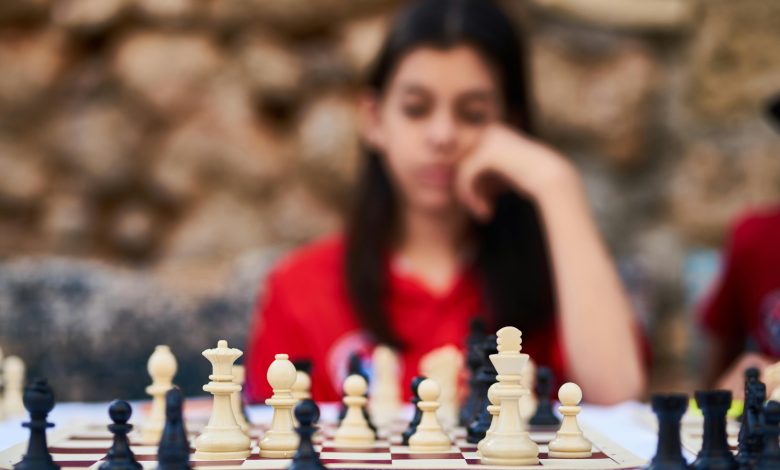Mastering Padel Tactics for doubles and singles play

Introduction to Mastering Padel Tactics for doubles and singles play
Padel, a racquet sport that combines elements of tennis and squash, has been rapidly gaining popularity across the globe.
Whether you’re stepping onto the padel court for a singles skirmish or a doubles duel, understanding the tactics of the game can give you a significant edge.
This article will delve into the strategies that can help you dominate both formats of the game.
Key Takeaways:
- Understand the unique strategies for both singles and doubles padel play.
- Learn how to effectively position yourself and communicate with your partner in doubles.
- Discover how to exploit the enclosed court to your advantage in singles play.
- Mental Strength – A never-say-die attitude to chasing down difficult shots.
The Basics of Padel Court Dynamics
Before diving into the tactics, it’s essential to grasp the fundamentals of the Padel court. Unlike tennis, a padel court is enclosed by walls, which the ball can be played off, similar to squash.
This unique feature adds an extra dimension to the game, influencing the tactics significantly. In singles play, the smaller court size compared to tennis means that precision and strategic placement of the padel ball are crucial.
For doubles, the court may feel crowded, so understanding spacing and synchronization with your partner becomes key.
In both singles and doubles, the serve is underhand, which sets a different tone for rallies. The serve must be strategic but not overpowering, aiming to place the opponent in a less advantageous position right from the start.
Mastery of the court’s dimensions and the serve’s subtleties is the first step toward tactical proficiency in padel.
Singles Strategy: Exploiting Space and Pace
When playing singles on the Padel court, your strategy revolves around exploiting space and controlling the pace of the game. Since you don’t have a partner to cover the court, your shots must be precise and calculated.
Use the walls to your advantage by hitting shots that rebound at difficult angles for your opponent. This can force errors or weaker returns that you can capitalize on.
Another key tactic in singles is varying the pace of the ball. A mix of slow, spin-heavy shots and sudden, fast-paced drives can keep your opponent off-balance.
The goal is to create openings and force your opponent to move laterally across the court, which can be physically demanding and lead to mistakes.
Doubles Dynamics: Positioning and Partnership
In doubles, Padel, positioning and partnership are everything. Good communication and understanding between partners can turn a defensive position into an offensive opportunity.
One fundamental strategy is the “Australian formation,” where one player stands at the net diagonally opposite the server. This setup can surprise opponents and create immediate pressure after the serve.
Additionally, the “block and lob” tactic is a staple in doubles play. One player blocks the ball at the net to keep the rally short and low, while the other is ready to lob the ball over the opponents if they close in.
This combination can push opponents back and open up the court for attacking shots.
Advanced Shot Selection in Padel
When playing Padel, whether in singles or doubles, advanced shot selection can be a game-changer. A well-executed lob can give you time to reposition or force your opponents out of their comfort zone.
Using a padel racket to slice the ball can add a challenging spin, making it difficult for opponents to predict the ball’s trajectory. Incorporating drop shots when your opponents are positioned deep in the court can keep them guessing and disrupt their rhythm.
It’s essential to read the game and choose shots that exploit your opponents’ weaknesses while playing to your strengths.
In addition to the basic shots, players should also master the ‘Chiquita’, a soft but precise shot played usually from the back of the court when under pressure. It’s a way to regain control of the rally without taking high risks.
Another advanced technique is the ‘vibora’, a type of smash with a spin that is less about power and more about placement and deception. These shots require practice and a good understanding of the padel tennis ball dynamics on an enclosed court.
By diversifying your shot selection, you can become a more formidable player in both singles and doubles padel matches.
Optimizing Footwork and Movement
Footwork is a critical aspect of padel that often goes unnoticed. Efficient movement on the padel court allows for better positioning, which is crucial for both offensive and defensive plays.
In singles, players need to cover the entire court, so lateral quickness and forward-backward agility are paramount. Practicing drills that enhance your ability to move swiftly and change direction can significantly improve your singles game.
In doubles, understanding the synergy between you and your partner is key. You should move in a coordinated manner, maintaining optimal spacing to cover the court effectively without getting in each other’s way.
For doubles, the concept of ‘mirroring’ your partner’s movements can be particularly useful. When one player moves towards the net, the other should do the same, and when one retreats, the other follows suit.
This tactic ensures that you present a united front, making it harder for opponents to find gaps. In both singles and doubles, good footwork also involves anticipating the ball’s bounce off the walls.
Since padel is played on an enclosed court, players must be adept at quickly adjusting their position to handle the ball after it rebounds.
Mastering footwork and movement not only conserves energy but also puts you in the best position to execute winning shots.
Serving with a Strategy
The serve in Padel, whether in singles or doubles, sets the tone for the point. In singles, the serve should be aimed towards the corners to stretch the opponent and limit their return options.
In doubles, variety is key. Mixing up serves between the opponents can disrupt their rhythm and communication.
Serving to the backhand is generally a good strategy, as it’s often the weaker side for many players.
A well-placed serve can also set up the net player in doubles to put away the return with a volley.
The server should follow their serve to the net quickly to capitalize on any weak returns and take control of the net, which is a dominant position in Padel.
The Art of the Smash
The smash is a powerful weapon in padel, especially in doubles. When executed correctly, it can end a point decisively. However, it’s not just about power; placement and timing are critical.
A well-timed smash can be directed into the corners or even out of the court if the rules allow, which can be unreturnable.
In singles, the smash must be used judiciously. A poorly executed smash can leave you vulnerable if your opponent manages to retrieve it.
It’s important to only attempt a smash when you’re in a good position and confident that you can hit a winner or force a weak return.
Defensive Tactics: The Wall is Your Friend
Defensive play in Padel is as important as offensive aggression. The walls can be used defensively to return balls that would otherwise be out of reach.
In singles, using the walls to return difficult shots can keep you on the point longer and frustrate your opponent. In doubles, coordinating with your partner to cover the court and use the walls effectively can turn defense into offense.
When pushed back, a defensive lob can give you time to reposition and reset the point. It’s crucial to practice lobs that are high enough to pass over the net player but not so long that they go out of bounds or become easy smashes for the opponents.
Winning the Mental Game
Padel is not just a physical game; it’s a mental battle as well. Maintaining focus and a positive attitude can influence the outcome of a match. In singles, self-motivation and resilience are key, as you have no partner to rely on.
In doubles, maintaining a supportive partnership and staying mentally in sync can keep morale high and lead to better play.
Strategic timeouts can be used to disrupt an opponent’s momentum or to regroup and discuss tactics with your partner in doubles.
Mental toughness also involves adapting your strategy mid-match as you learn your opponent’s strengths and weaknesses.
Summary: Mastering Padel Tactics for doubles and singles play
Padel, whether played as singles or doubles, is a sport rich in strategy and nuance. Understanding the dynamics of the padel court, mastering the serve, and knowing when to smash are fundamental to both formats.
In singles, controlling the pace and using the walls to create difficult angles are key tactics. In doubles, positioning, partnership, and communication are essential.
Regardless of the format, defensive skills and mental resilience can turn the tide of any match. By applying these strategies, players can enhance their padel game and enjoy this exciting sport to the fullest.
Mastering Padel Tactics for doubles and singles play FAQ Section
We’ve compiled a list of the most frequently asked questions about Mastering Padel Tactics for doubles and singles play from the people also asked.
Q1: What is the most important shot in Padel?
A1: While there isn’t one shot that stands above the rest, the serve is crucial as it starts at every point. A strategic serve can set the tone for the rally and put the opponent at a disadvantage from the outset.
Q2: How does the enclosed court affect padel tactics?
A2: The enclosed court in Padel allows players to use the walls to keep the ball in play, which adds a layer of strategy not found in tennis. Players must learn to anticipate and react to the ball rebounding off the walls, both offensively and defensively.
Q3: Is communication important in doubles padel?
A3: Absolutely. Communication is vital in doubles padel. Partners must constantly talk to each other to coordinate movements, decide who takes the shot, and plan tactics during the match. Good communication can be the difference between winning and losing.





